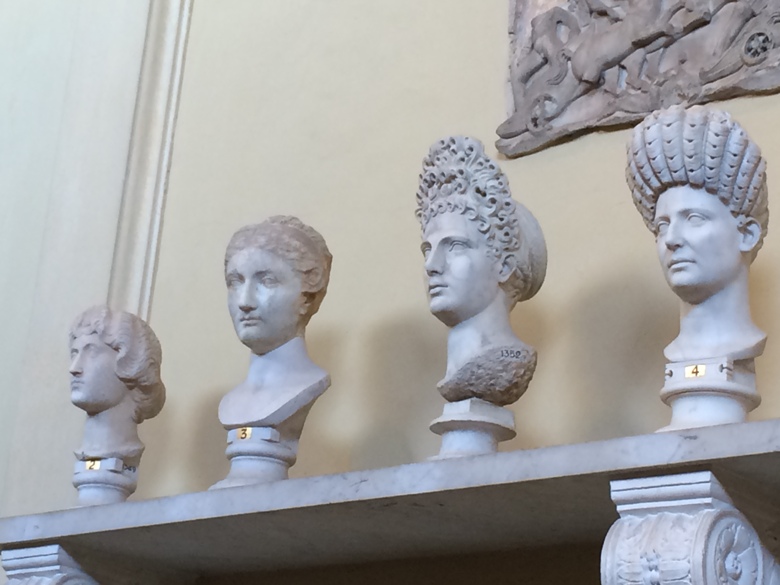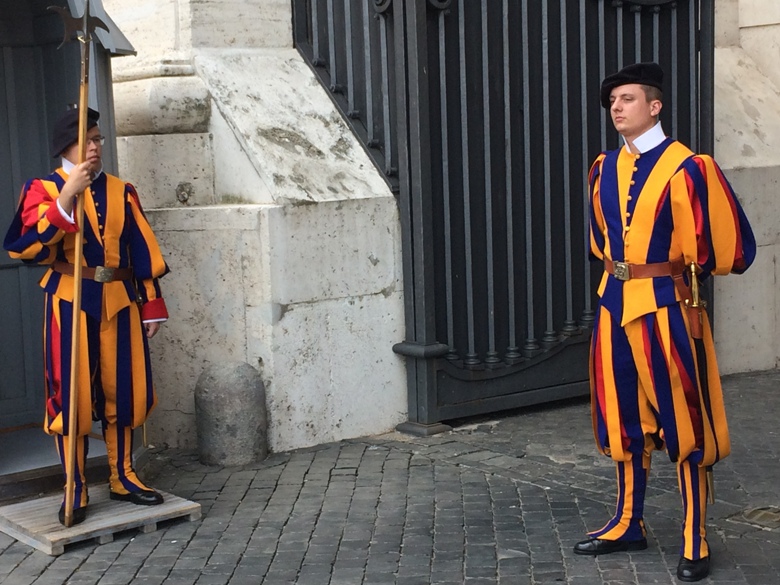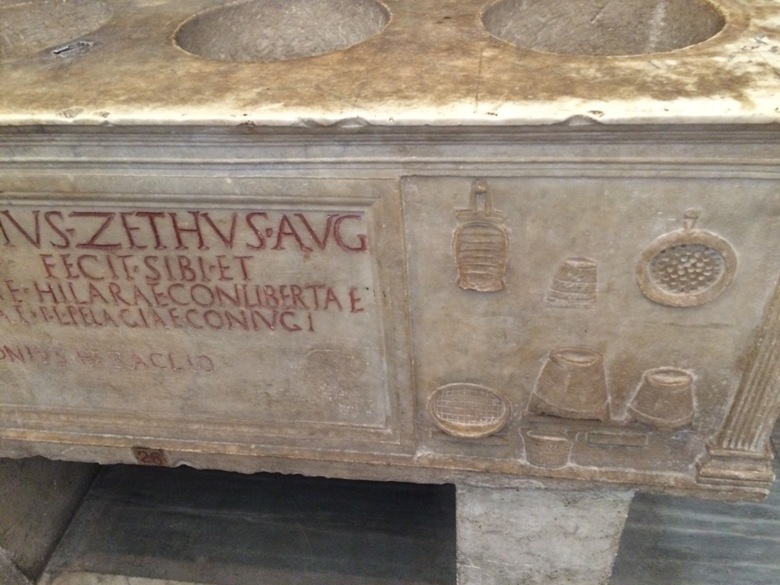By Eileen Ogintz
VATICAN CITY (Day 3) — Ready for a treasure hunt?
You wouldn’t guess the always crowded Vatican Museums would be a good place for one, but it is an ideal vehicle to keep kids interested, says Eva Polino, an art historian and licensed guide who developed a treasure hunt just for the young guests on Abercrombie & Kent’s popular family tours to Italy.

We’re on a shore excursion in Italy off the Carnival Vista, the newest and largest in Carnival’s fleet, which is sailing the Mediterranean this summer.
First, kids get the chance to have one foot in two countries at the same time. The Vatican, of course, is the world’s smallest sovereign state, established in 1929, the modern version of the papal fiefdom that had ruled Rome and much of central Italy before Italy was unified in the mid 19th Century. Incidentally, the pope also has authority over 28 other sites in and around Rome—another fun fact kids may (or may not) be interested in.
They definitely are intrigued by the Swiss Guards in their distinctive uniforms. Why are they Swiss? Kids always ask that question. Because when the pope first hired them as his private guards in the early 1600s, the Swiss were among the best soldiers in Europe, Polino explained. Today it is a prestigious assignment for Swiss soldiers as long as they are unmarried, speak four languages and of course, are Catholic.
“The goal is really having fun,” said Polino, whether you craft a tour yourself or take a guided one. (A tip: If you opt for a guided tour, you can cut the lines but you want to look for a smaller one or one that specializes in family tours. “Otherwise, the kids just get lost in the crowd and the guide can’t speak to them,” Polino explained.

Thus the scavenger hunt. How many different popes’ crests can you find? – She hands kids each a sheet that has pictures of 15 different ones. These papal symbols, she explains, tell us which pope did what in the galleries and St. Peter’s Basilica. Just like stadiums today, Popes wanted naming rights on what they built. Which pope’s crests do you see the most? He clearly got the most shout outs!
A tip: Don’t come Monday or Saturday—the busiest days. It is quieter Friday evening when the museums are open. Otherwise try early in the morning or after 2 p.m., she suggests,
Pope Francis’ shield is Blue with the Papal keys and a Star, which is the Ancient symbol of the Virgin Mary. His motto in Latin means “Lowly but Chosen.”
What was the huge pinecone in the Belvedere courtyard used for? (A fountain!) “The idea is to get them to look at things,” she explains.
The Vatican Museums have one of the greatest art collections in the world—everything from ancient mummies and Etruscan bronzes , statues , busts, spectacular frescoes by Raphael and of course the Sistine Chapel – the ceiling took Michelangelo four years to complete, the wall Frescos seven years, but they weren’t started until more than 20 years later. It’s impossible to even scratch the surface in a few hours, especially in a crowd, but it’s possible to spark kids’ interest in art and history.
“The goal is for them to see that art was made by people. It’s not boring,” she said.

“It’s a glimpse into the past that isn’t there anymore… this art was made to tell a story to people who didn’t read and write so they could understand… if they could understand, so could we… and so could kids.”
Stop at the replica of the Laocoon statue and later, when you see the real one, note the difference. (His private parts are covered by a leaf!) Kids she says, aren’t phased by all of the nudity, though some of their parents are. She asks them if they would go to the gym naked. In ancient Rome, she explains, athletes were very proud of their bodies and competed naked.
In the “Zoo of Stone,” kids look for animals—real ones and those that were the product of a sculptor’s imagination. They count the stone Candelabra in the Gallery of Candelabra and hunt for the one statue with “real” painted eyes.
Ask kids what the athlete Apoxyomenos is doing in his statue. (Actually exfoliating—athletes would scrape off oil used to anoint their bodies before competition with sand; they would sell the sand/oil to women who thought it would prevent wrinkles! Who knew?)
In the Tapestry Gallery, kids hunt for bees and other animals and find the tapestry where Jesus seems to be following you.
Everyone loves the Gallery of the huge, colorful Geographical Maps. She points out how detailed they were—after all no one had GPS then. Hunt for Sea Monsters, Winged lions, Dragons, Bees, elephants. “The kids end up competing with each other,” she explains.
Even the adults join the fun! Everyone really comes here to the Sistine Chapel. What kids want to know—how did Michelangelo paint the ceiling? (Standing on a scaffold with his arm raised!) It’s important to make kids understand that Michelangelo was a real person who got angry (often at the Pope for not paying him in a timely manner!) who was a perfectionist and changed his mind, a person who was passionate about his work. How did he make his lines straight (hanging string anchored with nails).
She tells the story of the unfortunate Cardinal Biagio who criticized his work to the Pope: Michelangelo painted him as the judge in Hell in the Last Judgment clearly recognizable to all who knew him. Many saints were tortured—there’s one depicted who was skinned alive, another holding on to the arrows. (Creepy, but kids think it’s cool!)
Look at a book together or the Vatican website before you visit, Polino suggests, so the kids will have a sense of what they are looking at. For example, Christ passed on to St. Peter the divine right to keep tabs on earth and its people when he turns the keys to Peter, the first pope. Where do you see that story told?
In St. Peter’s Basilica, of course, is Michelangelo’s Pieta—a masterpiece he sculpted when just 19. Notice the face of Mary, she tells the kids—she looks like a young teen herself. And because Michelangelo was so young, many didn’t believe the work was his, she tells the kids. So he put his name on Mary’s belt for everyone to see.
They also like seeing the dead popes in their clear glass coffins preserved as when they lived. Which statue has a shiny foot? (Peter—and if you can, touch it supposedly it brings luck.)
Kids can’t help but be impressed by the sheer size of the Basilica and the grandeur. So much gold! So much marble! It is, after all, the biggest church in the world. Ready to climb the dome? You can make it 551 steps! Just follow the kids!
